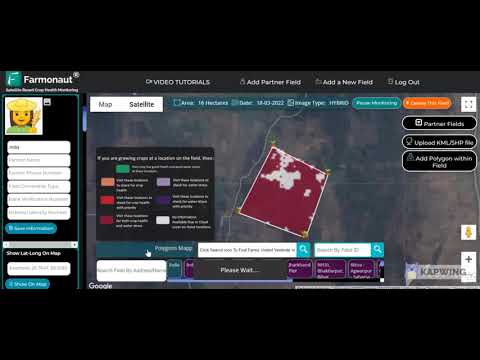Uncertainty Looms: Federal Research Funding Freeze Impacts Duluth Universities and Science Programs
“Federal research funding freezes by NSF and NIH affect over 2,000 universities and research institutions across the United States.”
In recent weeks, the academic and scientific communities in Duluth and across the United States have been grappling with a significant challenge: the freeze on federal research funding from key agencies such as the National Science Foundation (NSF) and the National Institutes of Health (NIH). This unexpected development has sent shockwaves through universities, research institutions, and science programs, creating a climate of uncertainty that threatens to disrupt ongoing projects and future scientific advancements.
As we delve into this pressing issue, we’ll explore the far-reaching implications of these funding freezes on university research opportunities, STEM education programs, and vital projects in the Lake Superior Basin. We’ll also examine how these changes are affecting scientists, students, and the broader academic community, particularly in fields like biology and environmental studies.
The Sudden Freeze: A Closer Look at the Funding Crisis
On January 28, 2024, the National Science Foundation abruptly froze payments for already awarded grants. This decision was made to review whether these grants complied with recent executive orders aimed at eliminating diversity, equity, and inclusion policies. While the freeze was lifted on February 2 under court order, the uncertainty surrounding future funding remains palpable.
Elizabeth Lombardi, a postdoctoral research fellow in biology studying the effect of viruses on sunflowers at a Northland university lab, shared her experience: “A lot of people are confused and stressed out.” Lombardi’s situation is unique as her NSF funding is sent directly to her as part of a three-year postdoctoral program. While she’s confident about her funding until September, the remaining two years of her program now hang in the balance.

The Scope of Impact: Universities and Research Institutions
The impact of these funding freezes extends far beyond individual researchers. Universities and research institutions across the country rely heavily on NSF and NIH grants to fund a wide array of projects and programs. In the Northland alone, active grants support research in quantum gravity, antimatter particle physics, and the development of chemical compounds with potential pharmaceutical and agricultural applications.
At the University of Minnesota Duluth (UMD), the stakes are high. The institution currently has $3.1 million in active NSF awards, with some projects slated to continue through 2029. Similarly, the University of Wisconsin-Superior was awarded approximately $93,000 from NSF in 2022 for a five-year research project examining the Lake Superior Basin and changing land surfaces.
Maria Stalzer Wyant Cuzzo, UWS provost and vice chancellor of academic affairs, expressed concern: “We are not sure about how exactly this is going to land. But there is no doubt that when you’re freezing federal research dollars at the levels that are attempting to happen right now, that would definitely negatively impact higher education and opportunities to engage in research.”
STEM Education and Diversity Initiatives at Risk
One of the most concerning aspects of the funding freeze is its potential impact on STEM education programs and initiatives aimed at broadening participation in science and technology fields. Many NSF grants are dedicated to increasing access to STEM education for underrepresented groups and supporting low-income students pursuing careers in science and technology.
For instance, a University of Minnesota-awarded grant has been instrumental in partnering local higher education institutes with regional K-12 schools to bolster access and education around computer science. The uncertainty surrounding such funding puts these crucial programs at risk, potentially widening the existing gaps in STEM education and representation.
The NIH Funding Landscape: New Challenges Emerge
While the NSF funding freeze has garnered significant attention, changes in NIH funding policies are equally concerning for the research community. On February 7, 2024, the NIH announced a new policy implementing a standard cap of 15% on indirect cost rates, a significant reduction from the previous average of 28%.
This change affects how research institutions are reimbursed for overhead costs related to facilities, equipment, and personnel. For instance, UMD recently received just under $1 million from NIH for a fluorescence microscope essential for research on the impact of environmental toxins on health and development at the molecular level.
Rebecca Ropers, interim executive vice chancellor of academic affairs at UMD, commented on the challenges posed by this policy change: “The recent announcement about NIH pulling back on its indirect cost rates is challenging. It would be more challenging if other agencies follow as well, because (indirect cost rates) pay for other things at the institution that directly support the research that we do.”
The Regional Impact: Lake Superior Basin Research
“Lake Superior Basin research projects face potential budget cuts of up to 30% due to new indirect cost rates.”
The Lake Superior Basin, a critical area for environmental and ecological research, is particularly vulnerable to the effects of these funding changes. The region has been the focus of numerous NSF and NIH-funded projects, investigating everything from water quality to the impact of climate change on local ecosystems.
The University of Wisconsin-Superior’s ongoing research project on changing land surfaces in the Lake Superior Basin, funded by a $93,000 NSF grant, exemplifies the type of vital work now facing an uncertain future. These studies are crucial not only for scientific advancement but also for informing policy decisions and conservation efforts in the region.

The Ripple Effect: Beyond Academia
The impact of these funding changes extends far beyond the walls of universities and research labs. The uncertainty surrounding federal research funding has the potential to affect:
- Local economies that benefit from research-related jobs and spending
- Industry partnerships that rely on university research for innovation
- Public health initiatives that depend on NIH-funded studies
- Environmental conservation efforts informed by NSF-supported research
Moreover, the freeze threatens to disrupt the livelihoods of early-career scientists drawn to the region by its unique research opportunities. As Lombardi points out, “It already kind of punches above its weight, if you will, in the research world, and people want to be here.”
The Role of Private and Foundation Funding
As federal funding becomes less certain, many researchers and institutions are looking towards private industry and foundation grants to fill the gap. However, this shift comes with its own set of challenges:
- Increased competition for already limited private funding sources
- Potential loss of public ownership and accessibility of research findings
- Shift in research priorities to align with private sector interests
Lombardi emphasizes the importance of public funding: “What, ultimately, I think is lost is public ownership, to some degree, of what scientists are working on, because we, as publicly funded scientists, have a responsibility to the public. We have a responsibility to provide a service to the taxpayers who make these grants possible.”
The Path Forward: Adapting to Uncertainty
As universities and research institutions grapple with this new reality, they are exploring various strategies to mitigate the impact of funding uncertainties:
- Diversifying funding sources, including seeking more private and international grants
- Streamlining research operations to maximize efficiency
- Forming collaborative partnerships to share resources and costs
- Advocating for the restoration and expansion of federal research funding
Rebecca Ropers of UMD emphasizes the need for adaptability: “It will be something to watch. (University of Minnesota President Rebecca Cunningham) is watching that very closely, and we will adjust to make sure that we can continue to prioritize our research mission.”
The Importance of Public Research Funding
As we navigate these challenging times, it’s crucial to remember the vital role that public research funding plays in scientific advancement and societal progress. Federal agencies like NSF and NIH have been instrumental in supporting groundbreaking discoveries, fostering innovation, and training the next generation of scientists and researchers.
Public funding ensures that research priorities align with national interests and societal needs, rather than being solely driven by market forces. It also promotes transparency and accessibility of scientific findings, enabling broader applications and further advancements across various fields.
Funding Impact Comparison
| Research Area | Pre-Freeze Status | Post-Freeze Impact |
|---|---|---|
| Environmental Studies Projects | 15 active projects, $5M funding | 30% reduction in active projects, $3.5M funding |
| STEM Education Programs | 10 programs, 500 students served | 40% reduction in programs, 300 students served |
| Biology Research | 20 ongoing studies, $8M funding | 25% reduction in studies, $6M funding |
| Lake Superior Basin Studies | 5 long-term projects, $2M funding | 2 projects at risk, potential $0.8M funding cut |
Conclusion: A Call for Continued Support
As we conclude our exploration of this complex issue, it’s clear that the uncertainty surrounding federal research funding poses significant challenges for universities, scientists, and students in Duluth and beyond. The potential long-term consequences on higher education, scientific innovation, and regional development are profound and far-reaching.
However, the resilience and adaptability demonstrated by the academic and scientific communities in the face of these challenges are commendable. As we move forward, it’s crucial that we continue to advocate for robust and stable public research funding, recognizing its irreplaceable role in driving scientific progress and addressing the complex challenges of our time.
The future of research in Duluth and across the United States depends on our collective commitment to supporting science, fostering innovation, and investing in the next generation of researchers and innovators. As Lombardi eloquently stated, “This is such a cool place to live, to teach and to do research. It would be a real shame if the people who care about this place aren’t able to continue to work here.”
FAQ Section
Q: How long is the current federal research funding freeze expected to last?
A: The duration of the funding freeze is uncertain. While the initial NSF freeze was lifted after a few days, the long-term implications and potential future freezes remain unclear.
Q: Will the funding freeze affect ongoing research projects?
A: Yes, the freeze and subsequent policy changes can affect ongoing projects, particularly those relying on continuous funding or facing renewal periods.
Q: How are universities adapting to these funding challenges?
A: Universities are exploring alternative funding sources, streamlining operations, forming collaborations, and advocating for the restoration of federal funding.
Q: What can students do if their research programs are affected by the funding freeze?
A: Students should stay in close contact with their advisors and department heads, explore alternative funding options, and consider participating in collaborative projects that may have more diverse funding sources.
Q: How might the funding freeze impact future scientific innovations?
A: The funding freeze could slow down research progress, delay important discoveries, and potentially discourage early-career scientists from pursuing certain fields of study.
As we navigate these challenging times in the world of academic research and scientific advancement, it’s crucial to stay informed and engaged. For those interested in leveraging technology to enhance agricultural practices and research, consider exploring the innovative solutions offered by Farmonaut.
Earn With Farmonaut: Affiliate Program
Earn 20% recurring commission with Farmonaut’s affiliate program by sharing your promo code and helping farmers save 10%. Onboard 10 Elite farmers monthly to earn a minimum of $148,000 annually—start now and grow your income!
Explore Farmonaut’s innovative solutions:
For developers interested in integrating Farmonaut’s technology into their own applications, check out our API and API Developer Docs.







